Unplugged: Printing 3D Terrain
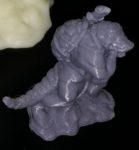 Role-playing games are typically a theater of the mind, but sometimes setting up a fancy game area makes an encounter extra special. Plaster or resin terrain can be used to set up a dungeon or castle, but they aren’t cheap, about $1.50 per piece. However, if you have access to a 3D printer, you can print your own for about ¼ the price. While some 3D files can be found at the popular Thingiverse site, Fat Dragon Games (currently running a Kickstarter) sells a selection of files for printing professionally sculpted 3D terrain pieces.
Role-playing games are typically a theater of the mind, but sometimes setting up a fancy game area makes an encounter extra special. Plaster or resin terrain can be used to set up a dungeon or castle, but they aren’t cheap, about $1.50 per piece. However, if you have access to a 3D printer, you can print your own for about ¼ the price. While some 3D files can be found at the popular Thingiverse site, Fat Dragon Games (currently running a Kickstarter) sells a selection of files for printing professionally sculpted 3D terrain pieces.
The new kickstarter (their 3rd) promises to bring out (depending on your level of support) a set of forest and wilderness terrain, cliffs and ledges, a dwarven fortress, as well as more dungeon pieces, a large tower, castle battlements, and even a castle-like GM screen (with dice tower and other bonuses.) Add-ons are available for spaceship terrain, mines, a tavern, rivers, and forests, while “sets” of figures from previous kickstarters are also available at a slight discount. The line of terrain is called DragonLock since most pieces can be connected together with little X-shaped clips so they don’t shift around, and even be picked up as one piece.
All this is well and good, but what do you get for your money? Here are some examples of previous sets that I’ve printed out on my 3D printer at home. I have a medium-high end printer, but even cheaper ($500ish) printers can reach similar resolution (although sometimes with more finicky user interfaces.) Here are a few DragonLock pieces from past sets I printed out.
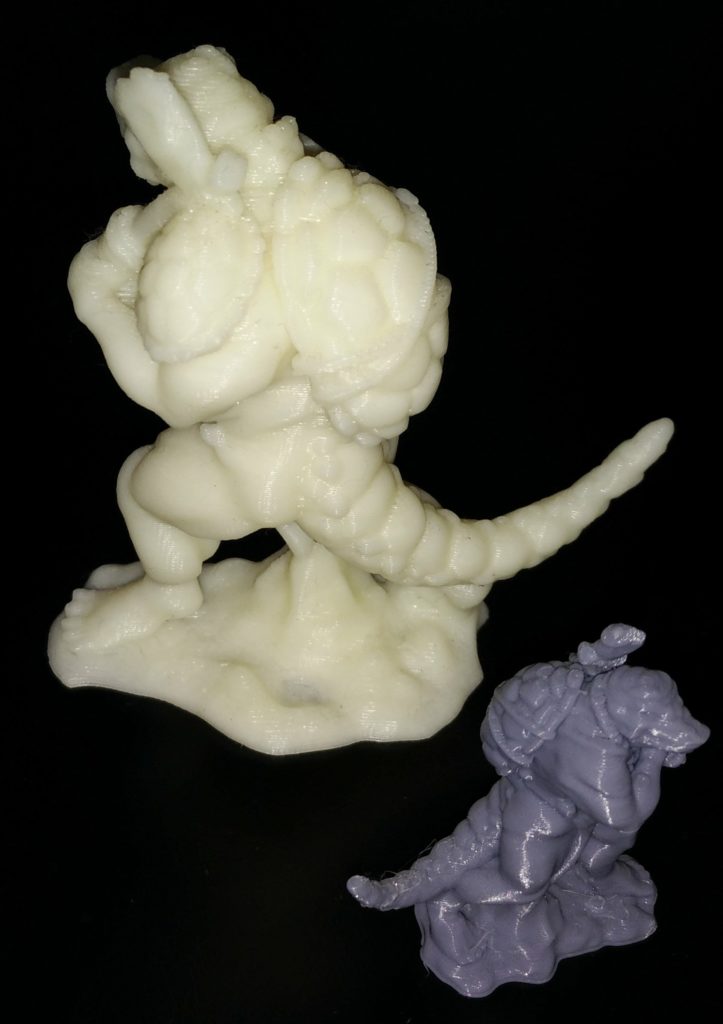
White figure printed on a professional 3D printer, 2″ tall grey on my household one.
In addition to terrain, Fat Dragon also has a line of miniatures. The two prints above come from my home printer (on the left, about 2” tall) and a larger one printed on a “professional” 3D printer at the local high school. Note how the figure was designed such that there isn’t a need for “support”. Some complex tiles with overhangs will not print correctly unless extra plastic is printed along the way to support the overhangs higher up on the object. While printing support isn’t too much of an additional cost, it means one has to spend time and effort removing the support (and trying to make the seams look nice) after the piece is printed. Being able to print without support is a very nice feature of all of Fat Dragon’s 3D files.
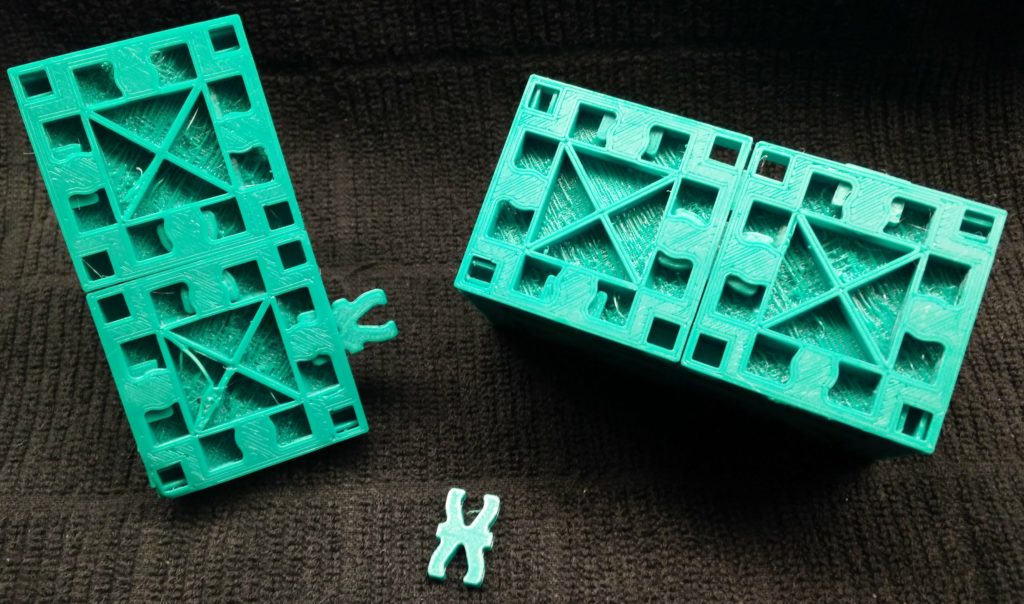
Examples of two tiles joined together with clips. They fit tightly enough so they can be picked up in one entire piece.
Larger structures are build out of interlocking pieces so that even large setups can be printed on relatively small printing area (about 5-6” on a side minimum.) The bottom of terrain is joined using the DragonLock clips. Each square piece has slots on all four sides and can be joined as shown in the photo. These grips are quite strong so even a 3×3 or 4×4 group of tiles can be easily picked up all at once.
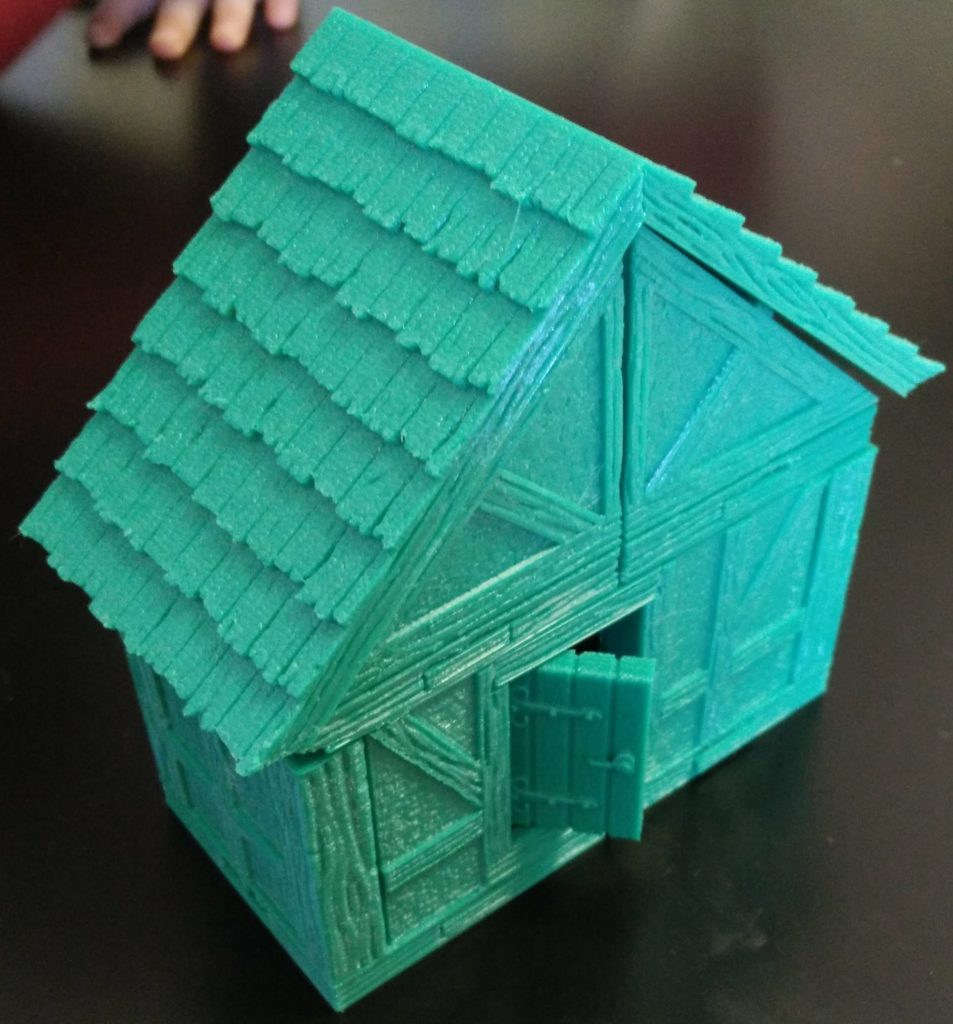
A nice little section of house, note the shingles, working door, and my youngest’s hand in the background. She’s a fan of the house.
This nice little house (complete with swinging door) is made by joining several pieces as shown below.
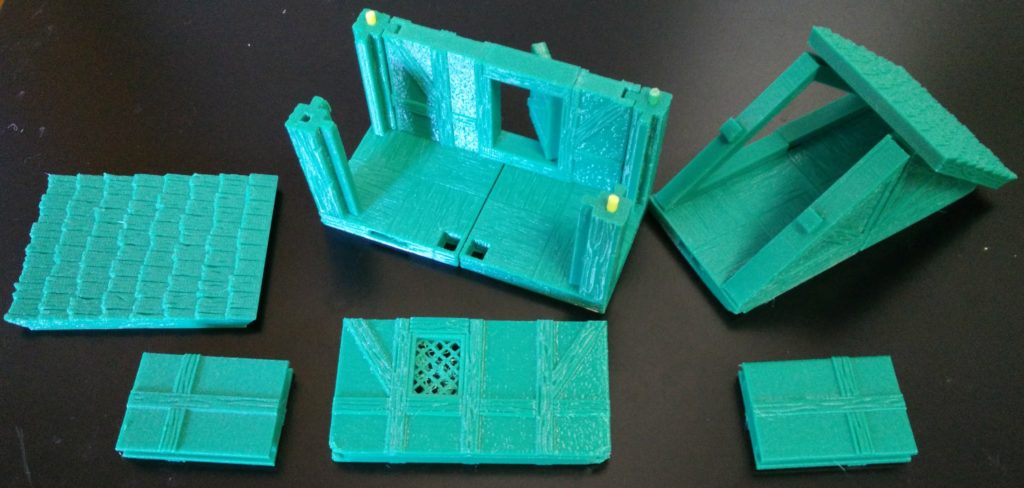
The small house disassembled. Easier to store but can still be rebuilt quickly. Note the tabs on the posts for the wall slots to slide into.
The floors (and attic floor) are joined with the DragonLock clips, while posts form corners of the structures. The walls have slots that fit down onto the posts. Note the roof rests on top of a set of rafters that plug into the attic floor just like the posts.

Left is a 3D printed Fat Dragon stairway. Center is a piece printed from a free Thingiverse file (the thicker base can be added later.) On the right is a manufactured piece from Dwarven Forge – more durable and heavier than the 3D prints. All three pieces were (for good or ill) painted by me.
If there are many freely available terrain files on Thingiverse, are the for-sale 3D files from DragonLock worth the money? Above are three example pieces, all (unprofessionally) painted by me. The left set of stairs are 3D printed DragonLock. The middle wall is printed from a free file on Thingiverse (“OpenLock brand” – I haven’t printed the “bottom” of the tile yet), and the rightmost wall tile is durable heavy plastic from professionally produced by Dwarven Forge. The Dwarven Forge wall looks great, and has a nice “heft” to it, but then it costs around $1.50 per piece. I find the stonework on the center OpenLock piece to be very smooth, with the Fat Dragon stairs having much better depth to the stones, very comparable to the Dwarven Forge wall. It also costs (depending on the price of the plastic filament) around $0.30 to $0.40, 3 to 4 times cheaper than Dwarven Forge. The difference becomes even greater when looking at large pieces like those needed for houses or castles. Note, there is also a fair bit of “support” on the Fat Dragon forums for neophyte printers to help get quality prints every time. With 3D printing still in its nascent stage, extra advice is always welcome.
Final Thoughts
I find the 3D printed Fat Dragon terrain to be very comparable to the pricey Dwarven Forge manufactured pieces. They don’t have the same “heft” as the professional pieces, but this is somewhat countered by the ability to chain multiple pieces together to make large connected layouts (excellent for adding “levels” onto other terrain.) Sure, the Thingiverse files are free to use, but I’ve found them to be inferior quality most of the time. The Fat Dragon files come in “Sets” (typically running $10 to $20 per set of several dozen pieces) so if there’s only one particular piece you want to print you might splurge for a manufactured one, or settle for a freely available one on Thingiverse.
However, if you’re looking to build something larger (buildings and town walls) or use large numbers of pieces, Fat Dragon 3D printing files are a great deal. Their sculpting quality is typically better than free files and I particularly like how easily they print since effort is put into making things that do not need to print any “support” to a piece. Unless you plan on printing A LOT of pieces, it isn’t going to be cost-effective to buy a 3D printer just for printing RPG terrain. However, if you already have access to (or want a good excuse to buy) a 3D printer, I highly recommend Fat Dragon’s offerings. If you want to go big, their third Kickstarter is running through Tuesday October 24th. It is rather pricey if you buy into everything, but you can also pick up some of their past sets for a discount off their normal prices.
(Many of the files for printing 3D pieces were samples provided by Fat Dragon Games.)





October 26th, 2020 at 3:02 am
You really make it appear so easy with your presentation however I to find this matter to be
actually something that I think I might never understand.
It kind of feels too complicated and very extensive for me.
I’m looking ahead in your subsequent submit, I’ll
try to get the dangle of it!